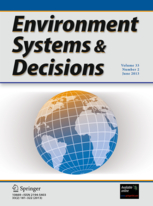The promise of asymmetric interventions for addressing risks to environmental systems. Erb Faculty Director, Joe Arvai published in Environment Systems & Decisions
 Recent studies suggest that people the world over are becoming increasingly concerned about the health of environmental systems. However, research has also shown that many people still fail to make decisions that will result in even small behavioral changes that, when aggregated across society, might lead to positive environmental consequences. One of the explanations often given for this disconnect is that many people are insufficiently aware of the connections between their decisions, behaviors, and environmental problems. Paradoxically, research on the link between education and decision-making has shown that the provision of information aimed at educating people about these linkages can be of limited utility. For example, habitual behaviors tend to be resistant to information provision unless accompanied by a disruption of the environmental cues that help to facilitate the behavior.
Recent studies suggest that people the world over are becoming increasingly concerned about the health of environmental systems. However, research has also shown that many people still fail to make decisions that will result in even small behavioral changes that, when aggregated across society, might lead to positive environmental consequences. One of the explanations often given for this disconnect is that many people are insufficiently aware of the connections between their decisions, behaviors, and environmental problems. Paradoxically, research on the link between education and decision-making has shown that the provision of information aimed at educating people about these linkages can be of limited utility. For example, habitual behaviors tend to be resistant to information provision unless accompanied by a disruption of the environmental cues that help to facilitate the behavior.
Similarly, while information or educational campaigns have been shown to increase knowledge and stimulate intentions to perform a behavior, behavior change is typically seen only when that information is accompanied by additional efforts at, for example, removing barriers to adoption of a new pattern of behavior. On answer to these challenges, Victoria Campbell-Árvai and Joe Árvai conducted three naturalistic experiments—each involving asymmetric interventions and set in the context of real-world decisions in cafeterias and hotels—aimed at helping people to make decisions at the individual level that, when scaled up, can help to address risks to environmental systems.